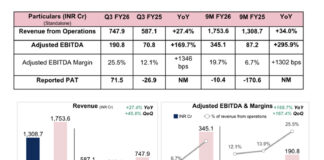The following article is attributed to Ms. Rashmi Chopra, Founder Ecloset & DigiCloset
In an era where consumer expectations for transparency and sustainability are at an all-time high, the fashion industry faces mounting pressure to rethink and innovate its supply chain operations. The concept of digital twins—a digital replica of physical assets, processes, or systems—has emerged as a transformative tool in this quest for greater transparency. This article explores how digital twins are revolutionizing supply chain management in the fashion industry, offering insights into their benefits, implementation challenges, and future potential.
Understanding Digital Twins
A digital twin is essentially a virtual model that mirrors a physical object or process. This real-time digital counterpart allows businesses to simulate, analyze, and optimize operations using data collected from its physical twin. In the context of the fashion supply chain, a digital twin can represent everything from a garment’s journey through production to the entire supply chain network. By integrating sensors, data analytics, and modeling technologies, digital twins provide a comprehensive view of supply chain dynamics, enabling more informed decision-making.
Enhancing Supply Chain Transparency
One of the primary benefits of digital twins in the fashion industry is their ability to enhance transparency. Traditionally, supply chains in fashion have been notoriously opaque, often obscured by layers of intermediaries and complex logistics. Digital twins address this issue by creating a clear, real-time map of the supply chain, from raw material sourcing to finished product delivery.
For instance, a digital twin of a garment can track its journey from the production floor to retail shelves. This includes monitoring the sourcing of materials, the manufacturing processes, and even the environmental impact of each stage. By making this information readily accessible, digital twins help brands provide detailed and verifiable data to consumers, thus meeting the growing demand for transparency.
Optimizing Efficiency and Reducing Waste
Digital twins not only offer transparency but also contribute to operational efficiency. By simulating various supply chain scenarios, fashion brands can identify bottlenecks and inefficiencies that may not be apparent through traditional methods. For example, a digital twin can model different supply chain configurations to determine the most cost-effective and sustainable options.
This capability extends to waste reduction as well. Digital twins can analyze and optimize the use of resources throughout the supply chain. By identifying inefficiencies and predicting potential issues, brands can reduce overproduction, minimize waste, and improve overall sustainability. This is particularly crucial in an industry where fast fashion has led to significant environmental and economic impacts.
Enabling Real-Time Decision-Making
One of the most significant advantages of digital twins is their ability to provide real-time data. This allows fashion brands to make informed decisions quickly, responding to changes in demand, supply disruptions, or other unforeseen challenges. For example, if a digital twin detects a potential delay in the supply chain, brands can proactively adjust their strategies to mitigate the impact.
This real-time capability also enhances risk management. By continuously monitoring the supply chain, digital twins can identify potential risks and vulnerabilities, allowing brands to implement preventative measures. This agility is essential in the fast-paced fashion industry, where trends and consumer preferences can shift rapidly.
Challenges and Considerations
Despite their potential, implementing digital twins in the fashion supply chain is not without challenges. Developing an accurate digital twin requires a significant investment in technology and data integration. Fashion brands must ensure that their data collection methods are robust and that the digital models are regularly updated to reflect real-world conditions.
Moreover, there are concerns about data privacy and security. As digital twins rely on vast amounts of data, including sensitive information about suppliers and production processes, ensuring that this data is protected from breaches is paramount.
Future Potential
Looking ahead, the role of digital twins in the fashion industry is likely to expand. Advances in technology, such as the integration of artificial intelligence and blockchain, promise to enhance the capabilities of digital twins further. For instance, AI can improve the predictive accuracy of digital twins, while blockchain can provide an immutable record of data, further strengthening transparency and trust.
In conclusion, digital twins represent a significant advancement in the quest for supply chain transparency in the fashion industry. By offering real-time insights, optimizing efficiency, and reducing waste, they address many of the challenges associated with traditional supply chain management. As technology continues to evolve, digital twins are poised to play an even more crucial role in shaping a more transparent, efficient, and sustainable fashion industry.












